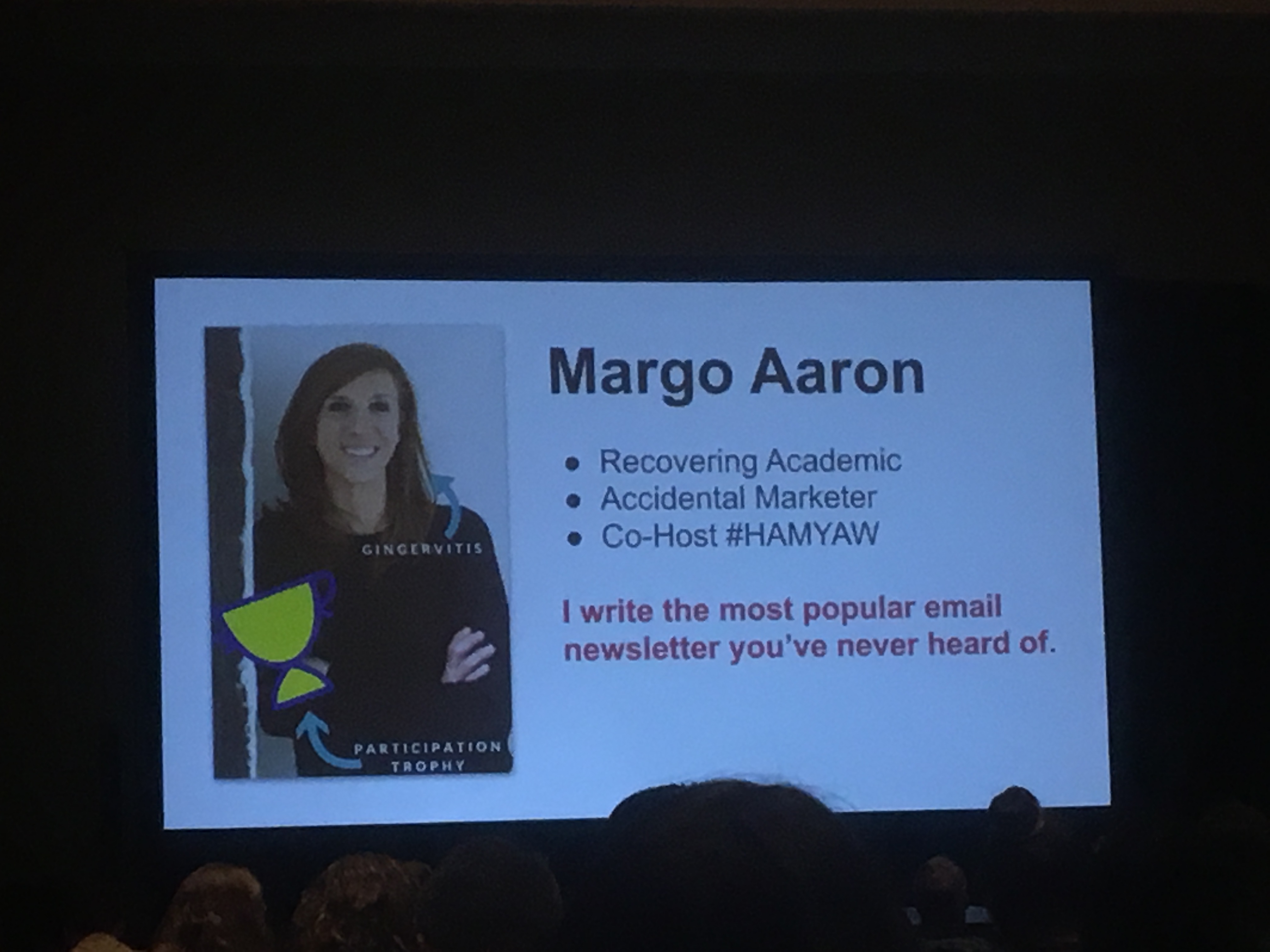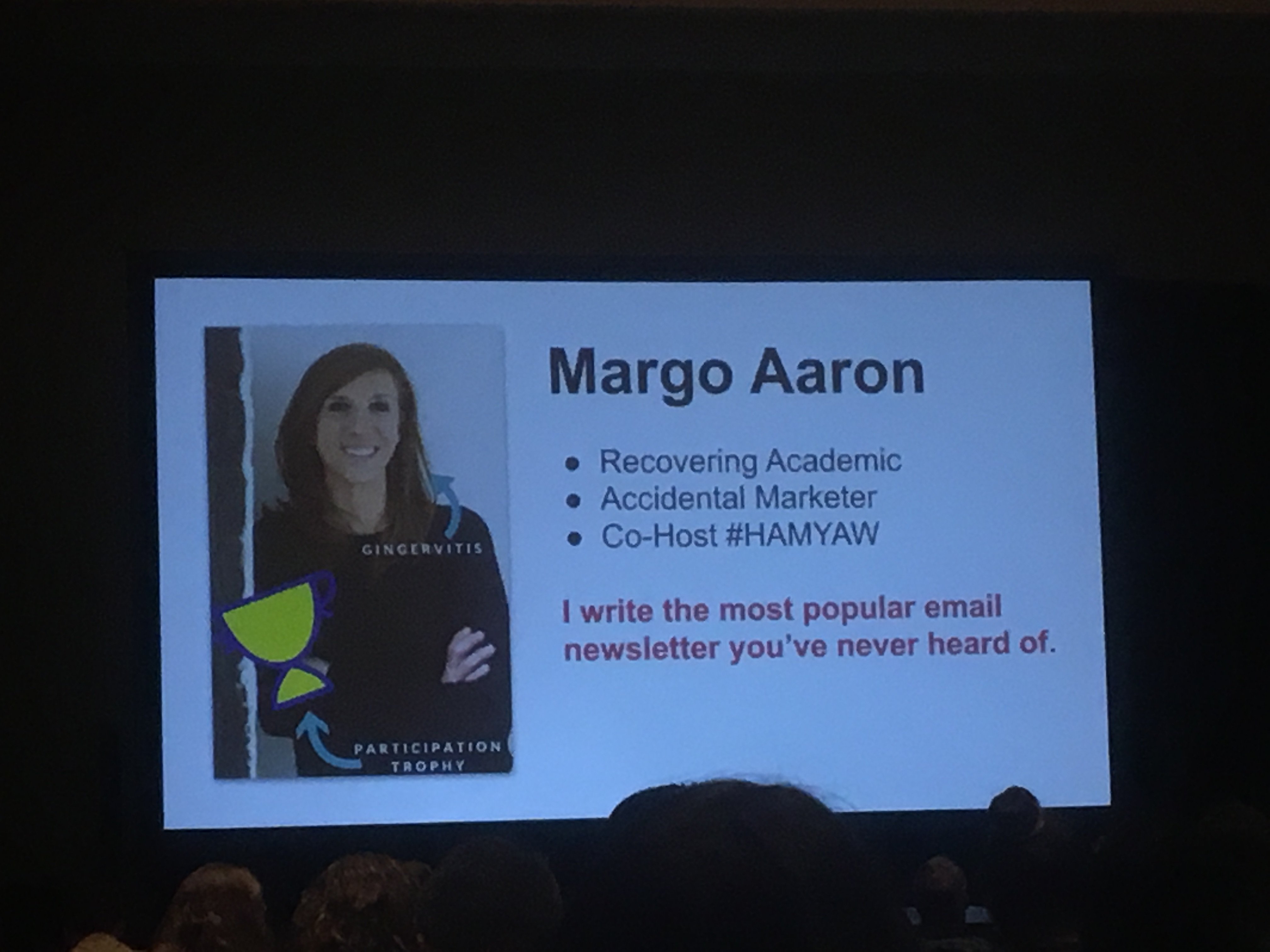2 min read
Insynth @INBOUND19 - How to Write Newsletters People Actually Want to Read
![]() Rich Newsome
:
04-Sep-2019 22:15:45
Rich Newsome
:
04-Sep-2019 22:15:45


Margo’s Twitter: https://twitter.com/margoaaron
The email newsletter is making a comeback. Tim Ferriss, Austin Kleon, TheSkimm, and others are seeing wild success from this channel, and yet in-house marketers and agencies remain SO BAD at newsletters.
Margo Aaron, Founder of That Seems Important, discusses the advanced basics of writing email newsletters—calling out the stuff that's holding marketers back, beyond tactics (like a boss who keeps changing your subject line).
She aims to review why the email newsletter is making a resurgence, look closely at who is doing it well (and explain why), and give practical tips on how you can get your emails opened and read.
Margo’s key takeaways are:
- The Plain English Principle (why talking like a human is still "professional" and most companies fail to do this)
- Design showcases the content; it is not the star (formatting tips for getting emails read)
- Write for your customers, not your colleagues
‘I Don’t Get It’ Should Be Your New Aim
Everything should feel like an inside joke to your audience. This is known as ‘in-group language’. The most successful newsletters (or copy) should speak the language of their audience. With that in mind, consider the vocabulary you might use when targeting architects and specifiers.
Margo is very explicit in her views about talking to your prospects in a human way, as though they are a trusted friend.
An Example Of An Effective Email
The reason why this email is so effective is because it possesses a number of interesting characteristics. Firstly, it’s funny. It pokes fun at millennials and that’s funny.
Secondly, the email talks to you as though you’re friends. You’re making a connection with the reader.
This isn’t to say that you should email your contacts in this way. The key message here is that if you understand who your target customer (buyer persona) is-and you can speak their language-you’re much more likely to achieve success with your email newsletters.
The Fiduciary Principle
Margo discusses the notion that you are the leader of a tribe. Your tribe is your contacts list and your content is the way you communicate with them.
Length And Frequency Of Newsletters
You’re being visually insulted all the time with irrelevant and boring content. You’re only annoying if it’s not the market. Therefore, length and frequency doesn’t have a definite answer; there’s not a ‘one-size-fits-all’ approach. What’s more important is the quality of what you’re writing and how you’re connecting with your audience.
Cultivating relationships with your audience will ensure that they open your emails, and even look forward to your emails.
Your Customers Are Not Your Colleagues
Margo rounded off her short session with a number of key points that could (and should) be applied to your building products and construction company.
Firstly, communicate in plain English. Don’t fluff the words and skirt around the point. Be plain and clear.
Secondly, your emails should aim to answer this question: Why should anyone care?
Thirdly, everything should feel like an insight joke with your audience. This way you’ll connect in a more human way.
Behave like a Fiduciary in your tribe. If, like me, you don’t know what or who Fiduciary is, Google it. Essentially, you are the leader of your tribe.
Lastly, it’s not annoying if you’re the market. This means that you should work hard to make your emails less generic and more tailored to your customer.
Your customers are not your colleagues, so stop talking to them like they are.


